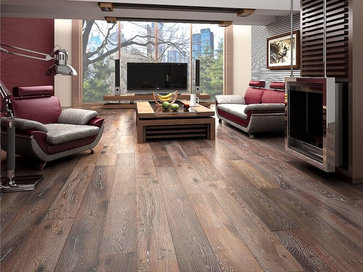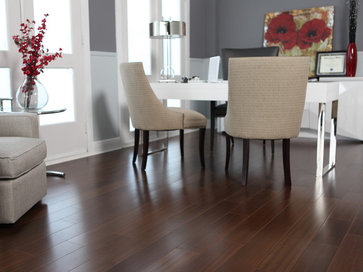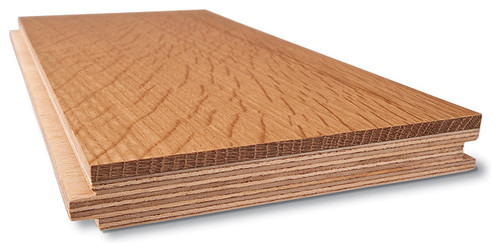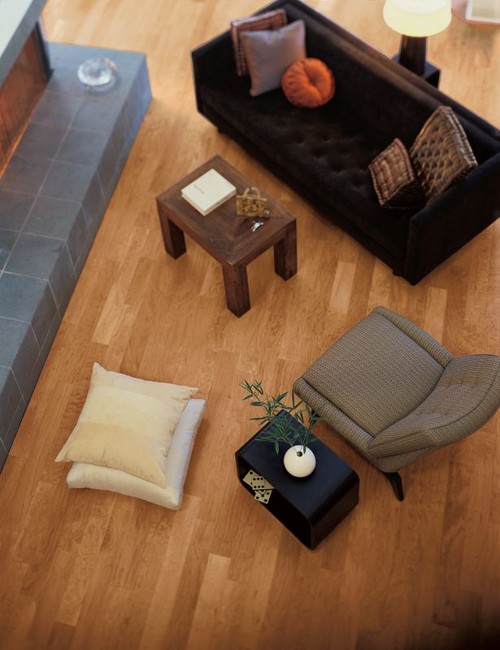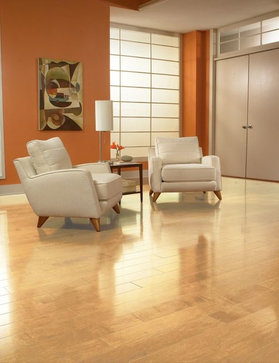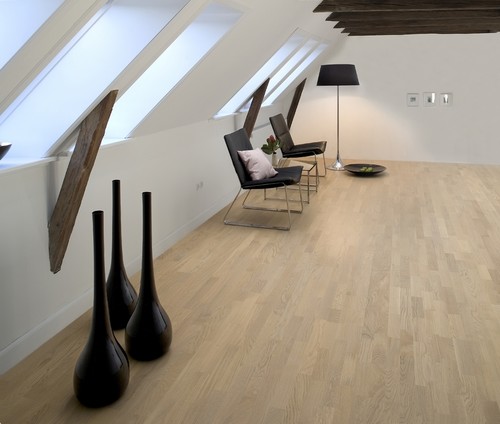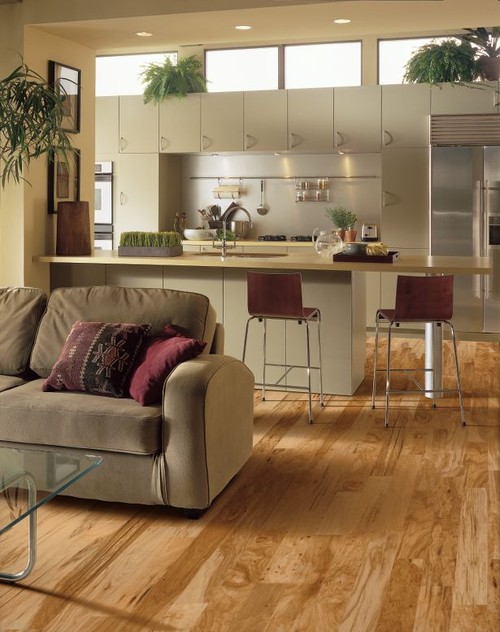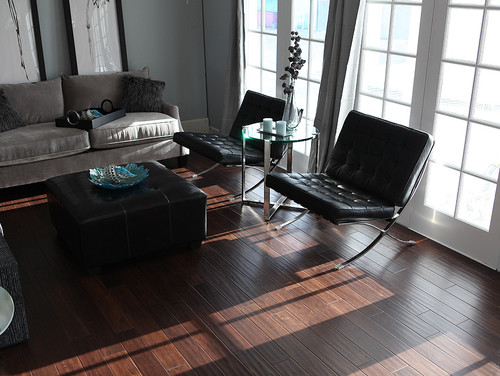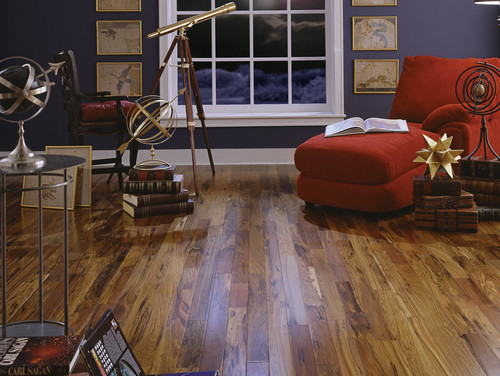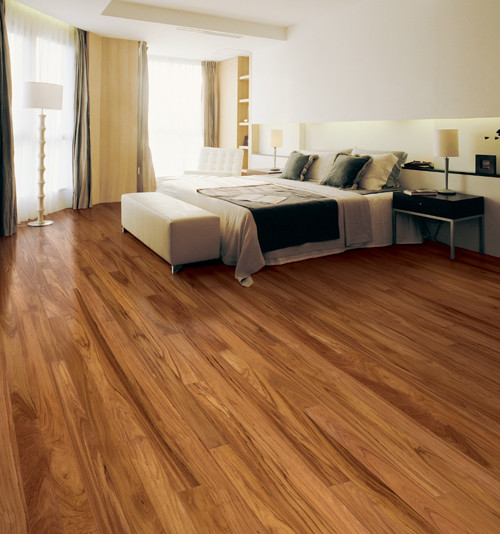When to Use Engineered Wood Floors
Originally, engineered wood floors were developed for use on the first floor of a home built on a concrete slab or in a basement. But engineered wood flooring technology has exploded over the last 20 years, and its products can be used just about anywhere, including in places where you'd expect to find plank floors.
Before we get too far into this though, I want to make the point that the two certifications I mentioned about solid planks apply here too. Look for the logo from the Forest Stewardship Council or the Sustainable Forestry Initiative on any wood product you buy.
Engineered wood floors can be more resistant to moisture and tend to be more stable. While no wood product can tolerate water standing on it, the increased moisture levels over concrete aren't a problem for most engineered wood floors.
The key to this increased stability and moisture tolerance comes from how an engineered wood floor is made.
This photo shows a cross section of a high-quality, engineered wood floor. They range in thickness from 3/8" to 3/4" (that's approximately 1 cm to 2 cm). The top layer is a veneer of the desired wood; the thicker that veneer is, the more expensive the floor will be.
When this top veneer is very thin (.6mm or so) the resulting floor cannot be refinished should that ever be needed. However, when the top veneer is between 2 mm and 6 mm, it can be refinished multiple times.
The layers in the buildup underneath the veneer top layer are important and also play a role in the final price. There can be anywhere between three and 12 layers of plywood and unfinished white wood, depending on the thickness and quality of the finished product.
When you are shopping for an engineered wood floor, pay attention to how it's made inside almost as much as you pay attention to how the top layer looks.
The different thicknesses exist so engineered wood flooring can be used in a variety of applications without awkward transitions between different flooring materials.
The most common transitions people have trouble bridging are areas between a tile kitchen or bath floor and the rest of the house. By using an engineered wood floor in a renovation, you can remove the need for large transition strips and trimming down doors.
Engineered wood floors were developed for use over concrete slabs, but the thicker, 3/4"-thick (2 cm) versions can be nailed down over a wood subfloor, the same way you would install a plank floor.
If you can save some money when you're building or renovating a frame house by buying a quality engineered wood floor, go for it. No one will know but you. Nailing down any wood floor is a job best left to the pros. Seriously.
Engineered wood floors thinner than 3/4" (2 cm) can be glued down, similar to how you'd glue down a vinyl or resilient floor. Gluing down an engineered wood floor is a project a do-it-yourselfer can usually take on provided he or she has a lot of time and a fair amount of experience with DIY projects. It may make more sense to have it installed, but there's a ton of information out there for the motivated.
The newest, thinnest engineered floors use an advanced tongue-and-groove system that locks them in place. These thin floors (usually called floating floors) can be placed over a cork underlayment or directly over an older floor.
Though it does take some skill, floating floors are the easiest to install. But before you attempt to do this on your own, be sure you have access to a table saw and chop saw — and know how to use them.
If sustainability is a priority of yours, engineered wood floors tend to be a more sustainable option. This is especially true if you're considering an exotic wood. The exotic trees that need to be harvested to make, say, a Rosewood floor go a lot further if only a 6mm-thick veneer is going on each board.
There's a lot of sustainability innovation that applies to the sublayers too, so do your homework and look for those FSC and SFI logos on anything you buy.
An engineered wood floor will last from 20 to 100 years, depending on the thickness of of the top veneer. The best engineered wood floors available will last as long and perform as well as a plank floor, so another consideration to keep in mind is how long you want this material to last.
Using a high-quality, long-lasting engineered wood floor won't affect your resale value, but using a cheap one will.
